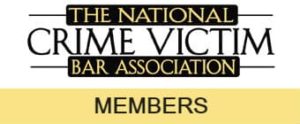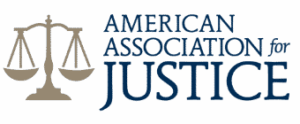
Hi - I’m Jeff. I am a lawyer licensed to practice law in Indiana. Our attorneys fight every day for the rights of sexual abuse victims. My team and I are ready to help.
The abuse law firm of Muncie is the sponsor of this article. We hope to help residents and visitors learn more about cities within our region, like that of Muncie.
Muncie is an unincorporated city in and the county seat of Delaware County, Indiana. The area was first settled by the Lenape, or Delaware people, in the 1790s after they migrated to the west from their tribal lands in the Mid-Atlantic Region. Situated along the White River, they founded Munsee Town, among many others. In 1818, through the Treat of St. Mary's, the native tribes in the area ceded their lands to the federal government and agreed to relocated west by 1821.
In 1827, the village that was once Munsee Town was renamed Muncietown, platted, and selected as the Delaware County seat. On January 13, 1845, the name was shortened to Muncie. Railroads like the Indianapolis and Bellefontaine Railroad arrived in the area shortly afterward and provided the town with access to larger markets and a way to transport people and goods in and out of the area.
On December 6, 1854, Muncie was incorporated as a town and later incorporated as a city in 1865. In the 1880s, the Indiana gas boom prompted a new era for the city. New businesses, industries and residents were attracted to the area because of its supplies of natural gas. Some of these new businesses and factories were:
By 1910, Muncie has become a well-established industrial town and commercial center for the east-central area of Indiana. Railroads like the Cincinnati, Richmond and Muncie Railroad, the Chicago, Indiana and Eastern Railroad, and the Chicago and Southern had reached the city by then, along with roads connecting to other towns and an electric interurban system.
In the 1920s, Muncie's commercial and industrial development increased as it became an automobile manufacturing center. During this time, the Rockefeller Institute of Social and Religious Research funded Robert and Helen Lynd, along with a team of sociologists, came to Muncie to study a typical middle-American community. Subsequently, they published their books, Middletown: A Study in Contemporary American Culture (1929) and Middletown in Transition: A Study in Cultural Conflicts (1937).
In the late 1900s, the National Science Foundation also funded a study of the city. Thomas Caplow released his books, Middletown Families (1982) and All Faithful People (1983). In 1988, he returned to Muncie for another study that became part of a documentary called "The First Measured Century" on the Public Broadcasting Service. It is said that the city is one of the most studied cities of its size in the U.S. Besides being a typical American city, other names it's known as is Magic City, Magic Muncie and Friendly City. As of 2010, Muncie has a population of 70,085 people.
Also check out Terre Haute, IN: Past to Present.
Ball State University was established in 1918 as a public research university. Before that year, it had been the private university of the Eastern Indiana Normal School since 1899. On July 25, 1917, the Ball brothers bought the foreclosed institution for $35,100 and gave it to the State of Indiana. In 1922, its name was changed to the Ball Teachers College and again to Ball State Teachers College in 1929. In 1961, the school became independent from Indiana State University and was approved to rename the school Ball State University in 1965.
Today, the school is classified with "R2: Doctoral Universities – High research activity." It is home to seven colleges and 21,597 students as of 2020. It offers 120 undergraduate majors, 130 minors, more than 100 master's, doctoral and certificate degrees, and 400 student clubs and organizations.
Muncie is home to a number of recreational spaces for residents and visitors to enjoy, including museums, art centers, greenways, parks, and preserves. Some of these are the David Owsley Museum of Art, the Horizon Convention Center, Emens Auditorium, the Muncie Civic Theatre and Canan Commons, Minnetrista Cultural Center, the Cardinal Greenway, Christy Woods, Muncie Children's Museum, John Craddock Wetland Nature Preserve, McCulloch Park, Tuhey Pool and many more.
Were you subjected to sexual harassment in a work-related environment? Besides reporting to human resources, contact our Muncie work abuse lawyers to get the compensation you deserve. Our experienced attorneys will work with you in achieving justice for yourself. Call today to learn more.
Wagner Reese: Jeff Gibson, Esq. Sexual Abuse Lawyers
201 N Illinois St 16th Floor
Indianapolis, IN 46204
(317) 344-8089


